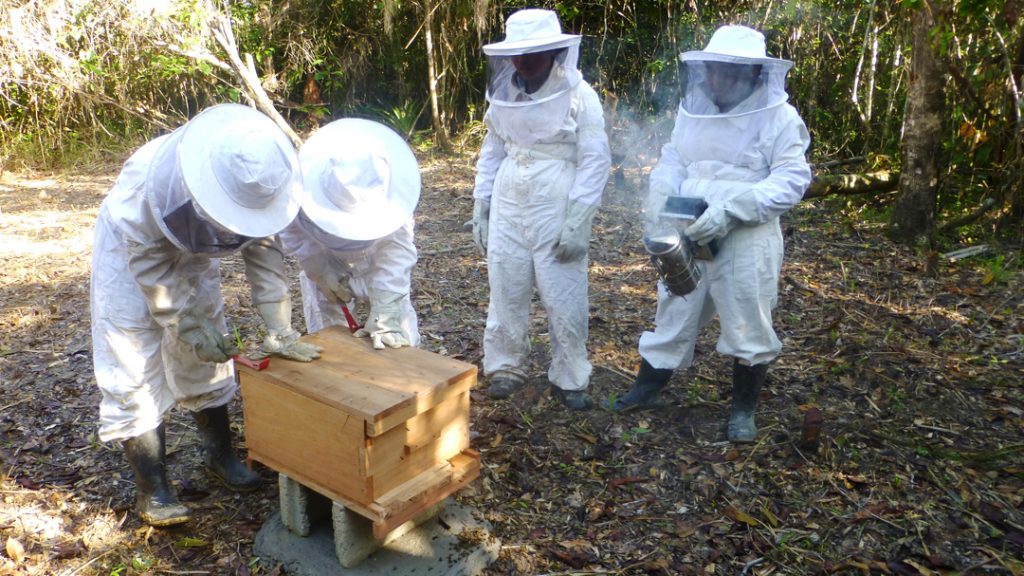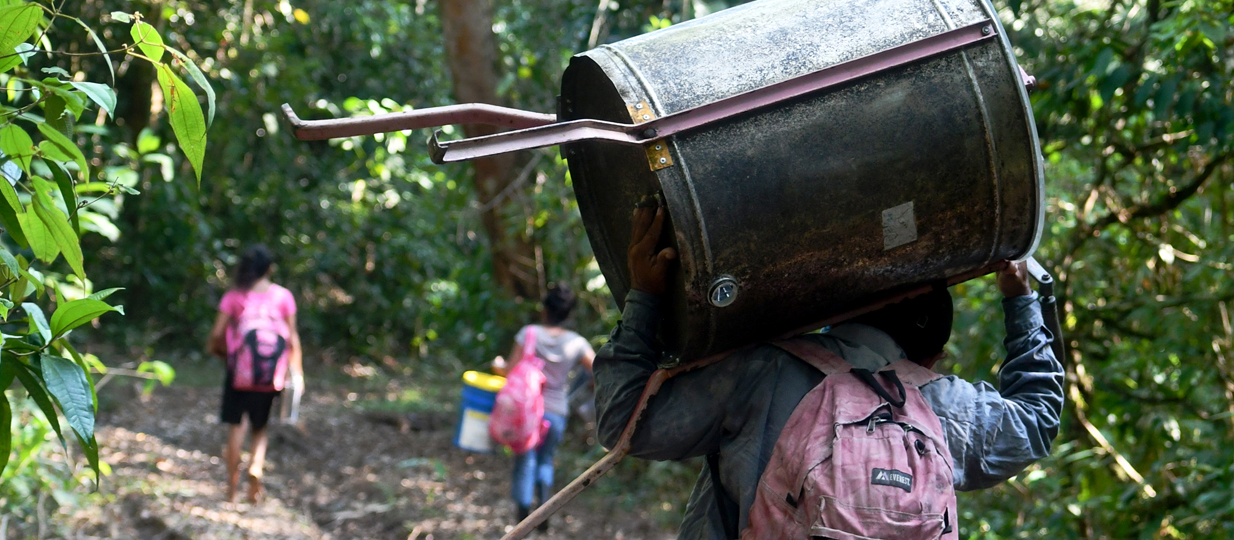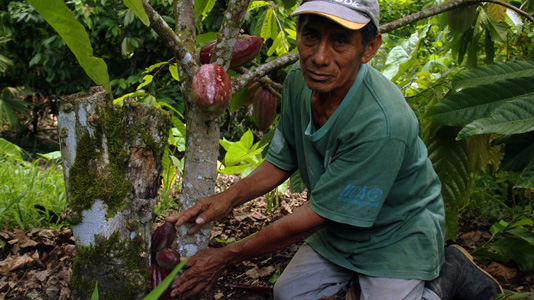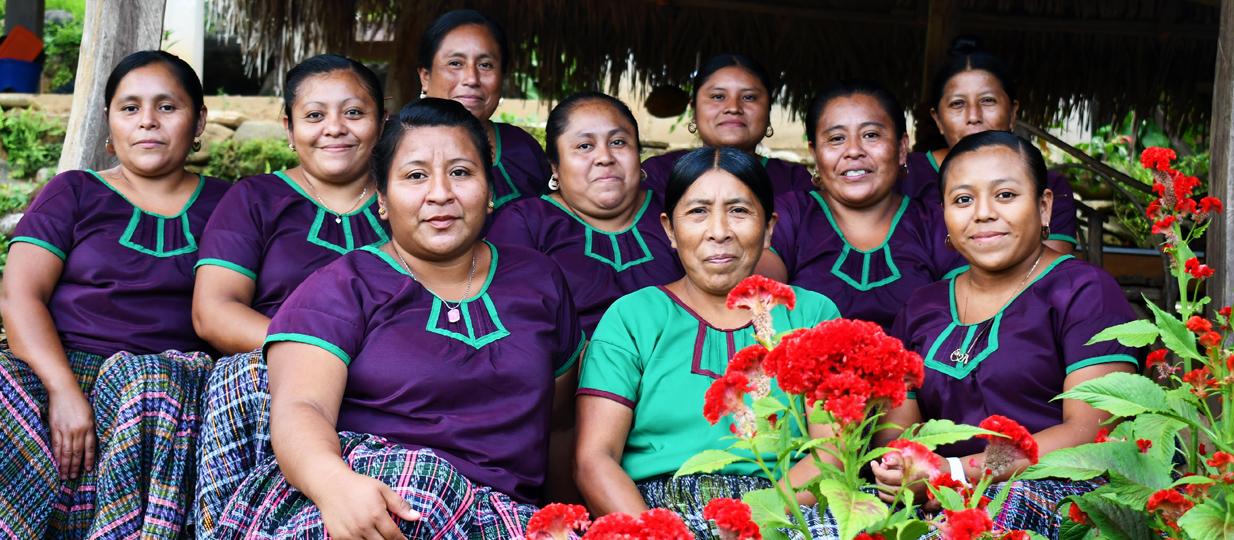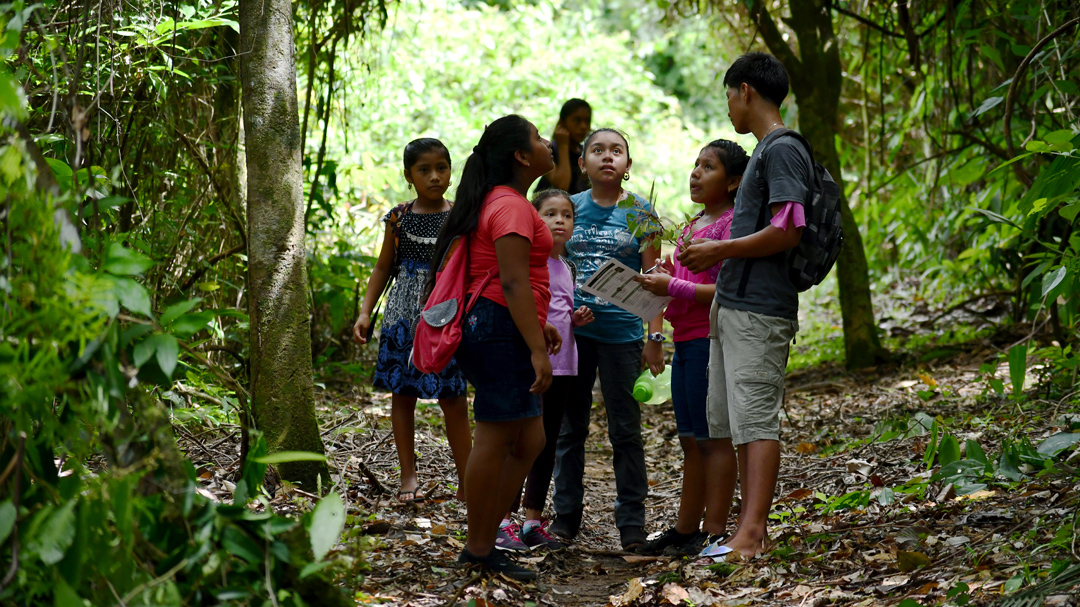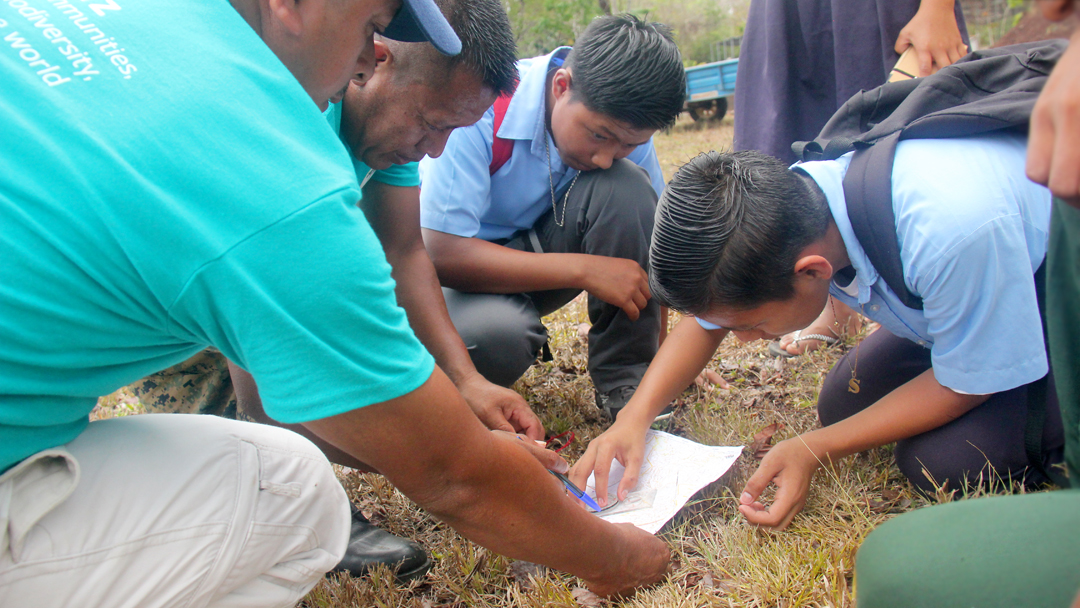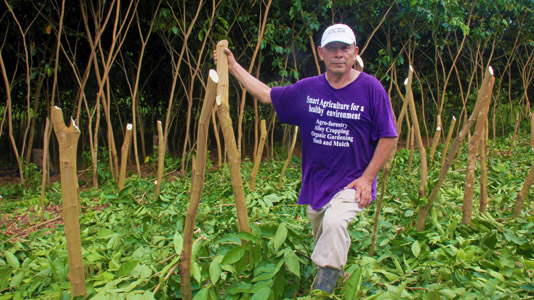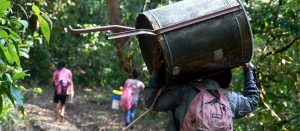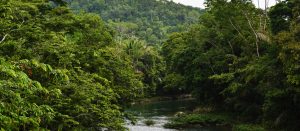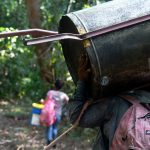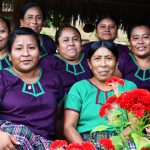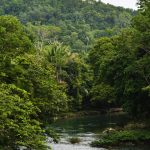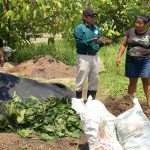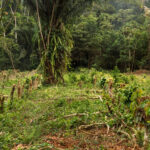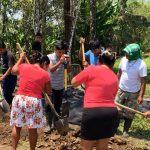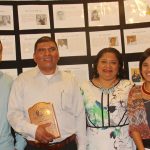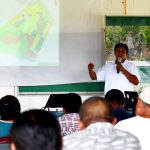Thirty-one farmers are at the forefront, making history implementing Belize’s first agroforestry concession — a climate-smart farming adaptation contributing to sustainable development.
As residents of Trio Village, a community buffering a protected area, the farmers envisioned gaining legal access to the 36,000 acre Maya Mountain North Forest Reserve (MMNFR) in 2012.
Five years after the approval of an agroforestry concession within the forest reserve, in 2019 the Trio Farmers Cacao Growers (TFCG) harvested 26,000 plantains, 49,600 pounds of corn, 3,000 pounds of peppers, 500 pounds of honey, and 11,800 pounds of wet cacao beans. The group members of TFCG are seeing the benefits of sustainable agricultural practices and are already envisioning opportunities such as beekeeping, ecotourism, and value-adding of cacao in the form of chocolate.
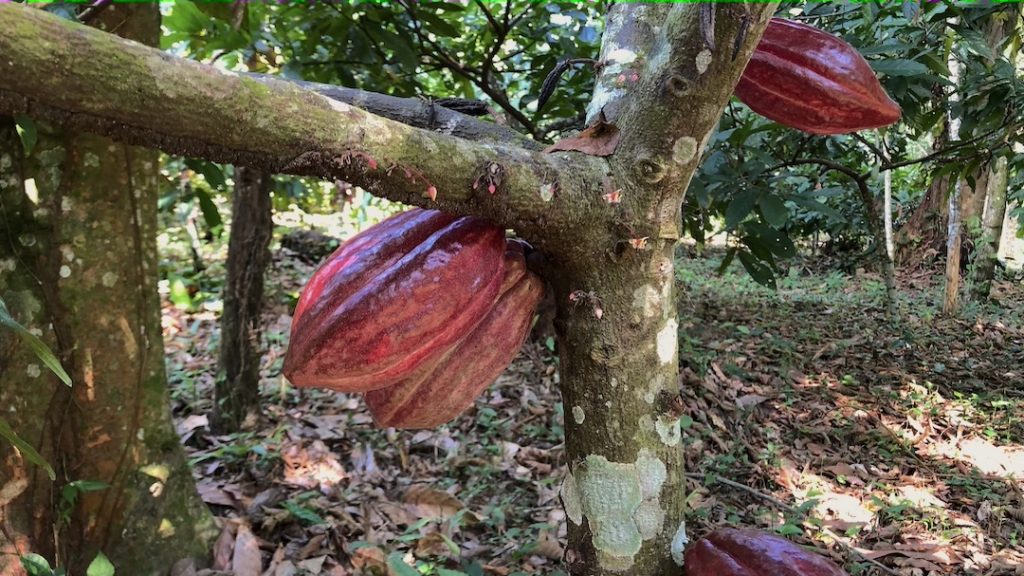
The successes, so far, have been possible through various partners. The government of Belize through the Belize Forest Department granted legal access to 936 acres for the agroforestry concession in 2014. Ya’axché played a critical role in working with the farmers to lobby the government of Belize and to develop a conservation agreement and an agroforestry concession management plan to guide the work. Ya’axché’s support to the group also included training workshops, equipment, material, and technical field support. Donors such as the Caribbean Community Climate Change Center, Gesellscheft fur Internationales Zuzammenarbeit – Caribbean Aqua-Terrestrial Solutions, GEF-Small Grants Programme and EU/ICCO Forest Governance Project have financially supported the implementation of the agroforestry concession.
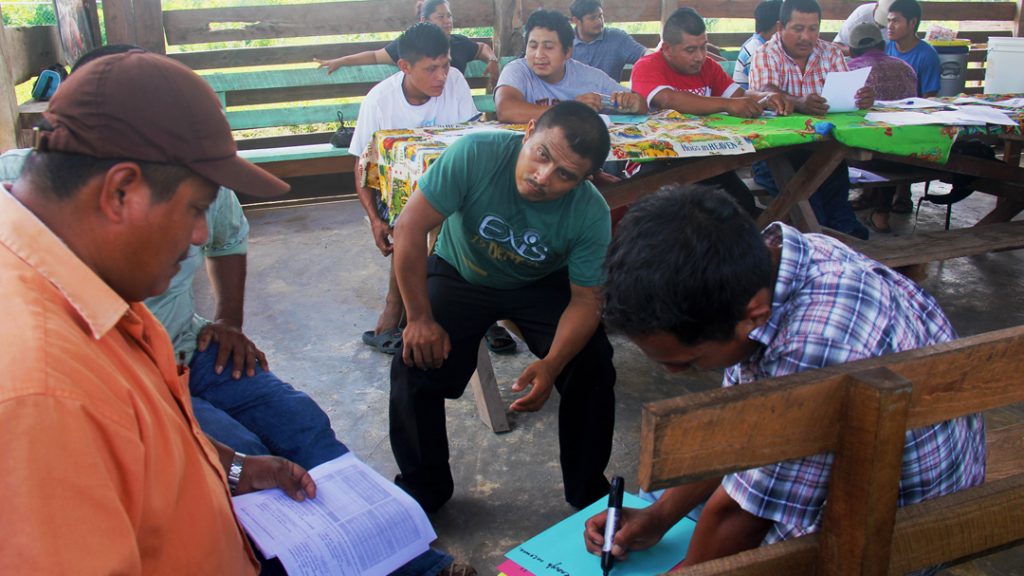
The farmers have utilized their support system to adopt cacao-based agroforestry, a newer farming practice in the area, which utilizes the shade of the trees to grow cacao. This way, farmers are able to keep many of the surrounding trees in the reserve standing. Exceptional farmers such as Alejandro Xol, Crisanto Assiq, Manuel Tut, Marcos Tut and Mario Xol have excelled in maintaining their plots; and, they have been reaping the benefits of their labor at harvest time. It takes dedication and consistent maintenance to take care of 350 cacao trees in an acre plot — some farmers having up to 10 acres of cacao trees. Furthermore, the organic practices of growing cacao and other annual crops allow farmers to invest in the health of soils.
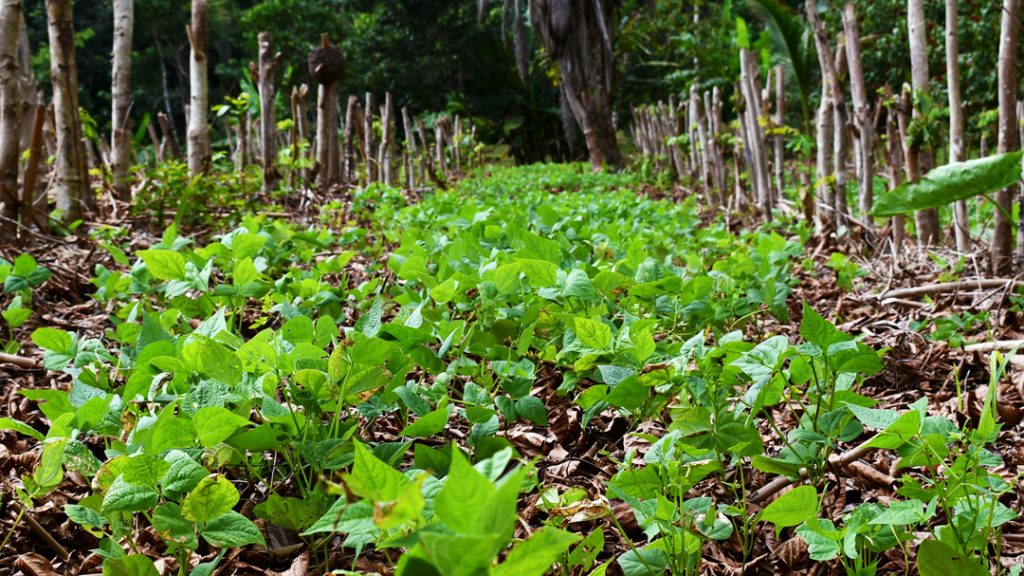
Critical to note of the successes is the conservation of natural flora and fauna. Ya’axché’s science team monitors and surveys mammals, birds, soils, freshwater, and vegetation in the forest reserve. Field cameras deployed across the agroforestry concession have photographed the 5 wildcats of Belize (jaguar, puma, ocelot, margay, jaguarundi), tapir, red-brocket deer, curassow, collared peccary, white-lipped peccary and even tayra. Recently, scarlet macaws and toucans have been photographed in the concession. Preliminary data analysis has indicated that the species richness is highest in areas with greater canopy cover.
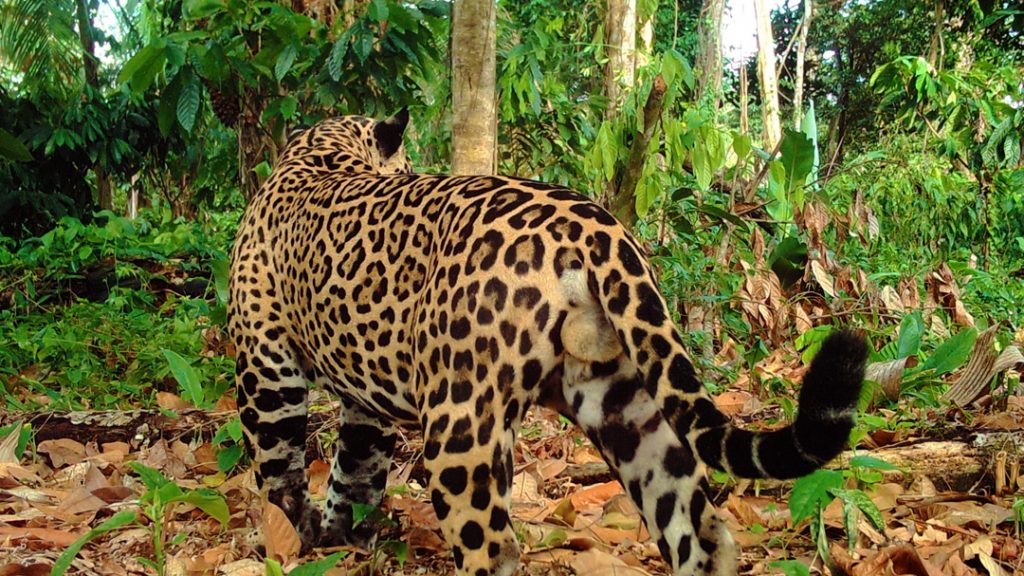
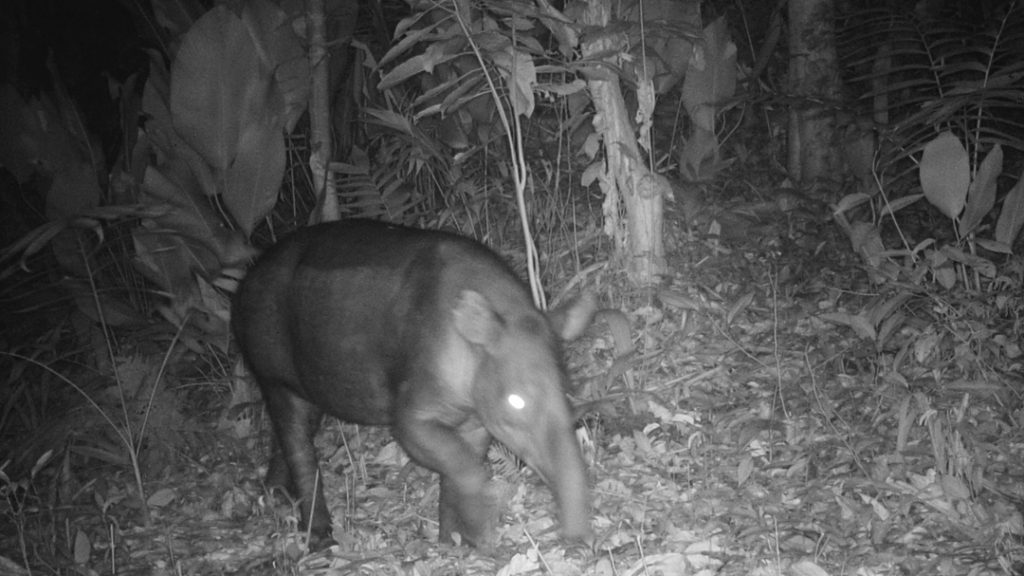
The Trio Farmers Cacao Growers are an inspiring example of how local, indigenous communities can actively help protect natural resources while supporting their livelihoods. The organized group, Trio Farmers Cacao Growers, is at the core of this exciting community forest governance initiative. The farmers with the support of Ya’axché, donors and partners are successfully pioneering this innovative approach to conservation. The successes so far indicate that it is a model that can be replicated in other protected forests in Belize.
